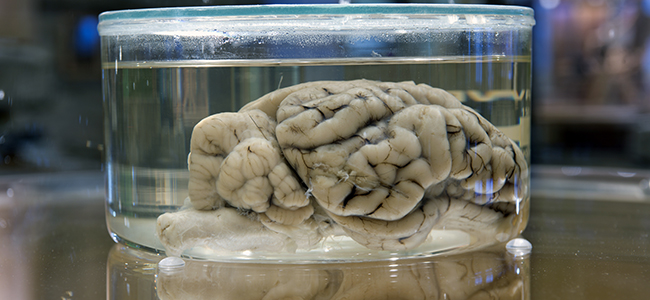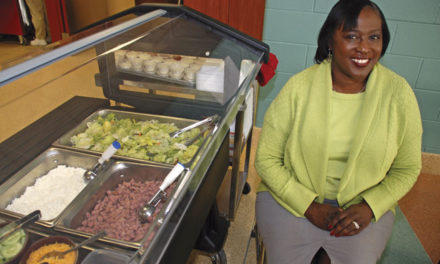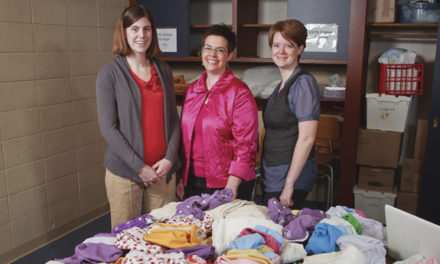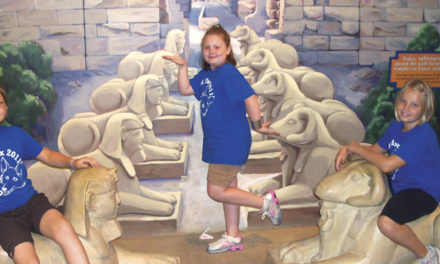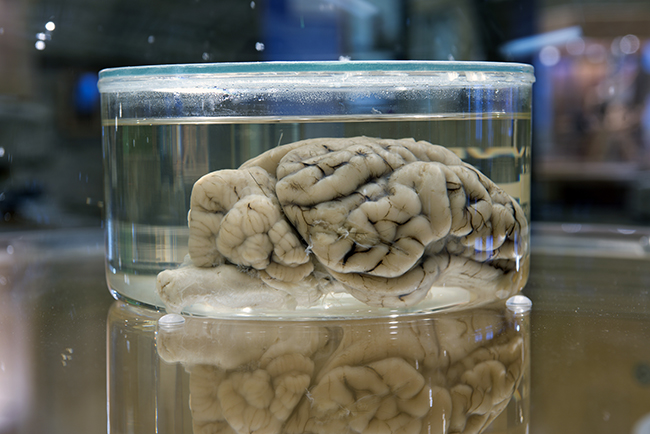
A variety of brains are on display at WonderLab, including those of a deer, shown here. Photo by Kendall Reeves
BY SOPHIE BIRD
Eight years of planning have gone into the creation of “Your Amazing Brain!” the latest exhibition at WonderLab Museum of Science, Health, and Technology. The interactive experience aims to educate visitors about the functions and health of the brain, says Karen Jepson-Innes, the museum’s associate executive director.
It’s serious science, but also a lot of fun, she says. Activities include an interactive maze that tests memory, a giant brain replica that explains the function of each lobe, and a model MRI machine where children can send a teddy bear in for a scan. The wall next to the museum’s staircase is lined with colorful artwork depicting different areas and functions of the brain.
“This is the most high-level exhibition we’ve ever done,” Jepson-Innes says.
Lisa Thomassen, Indiana University Department of Psychological and Brain Sciences senior lecturer, has been an active IU contact for the museum. When WonderLab reached out to the department about the possibility of displaying real brains, Thomassen obliged. “They said, ‘We want brains,’ and I said, ‘Okay.’”
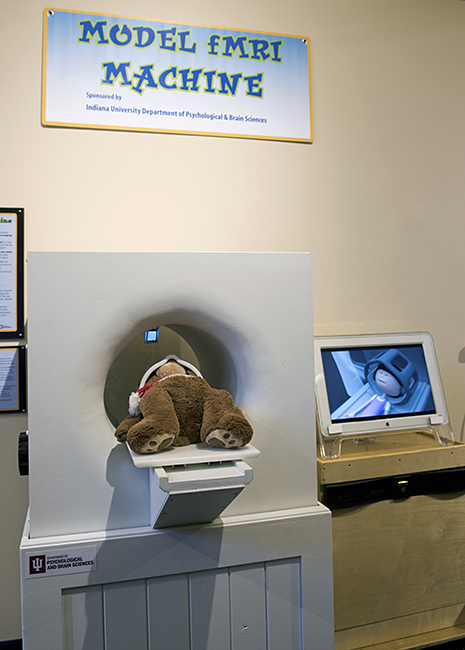
A teddy bear gets a brain scan in a model MRI. Photo by Kendall Reeves
A variety of brains are displayed, including those of a cat, a pigeon, a deer, and even a human. Participants can compare the brains according to size and structure and read informational packets about their similarities and differences.
“WonderLab is so interested in making sure that it’s really authentic science and that it’s good science,” says Thomassen. “It was really a thoughtful process.”
The IU department’s partnership with WonderLab helped expand “Your Amazing Brain!” to its current 13 exhibits. Thomassen and her colleagues double-checked scientific information, suggested ideas, and contributed resources, says Jepson-Innes.
The initial funding for the project came from the lab of John Beggs, IU associate professor of biophysics, who partnered with WonderLab after receiving a grant from the National Science Foundation. The grant provided for several of the exhibit’s activities, according to Jepson-Innes. “For about the last 10 years, WonderLab has been a frequent partner on these broader impacts grants,” she adds.
“Your Amazing Brain!” runs through September 28. For more information, visit wonderlab.org/exhibits.


